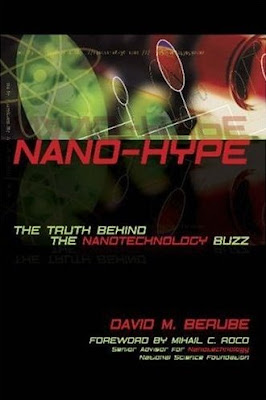 Nanotechnology has increasingly become a buzz word used by industry and scientists in the battle for funding. Indeed, much of what is now labelled nanoscience or nanotechnology is the product of the re-branding of older science. Although public awareness about nanotechnologies is still very low, gradually this field is increasingly featuring within popular media discourse and appearing in the storylines of films such as Spider Man, Agent Cody Banks, I Robot and The Incredible Hulk; TV programmes, such as Star Trek; children’s cartoons, such as the PowerPuff Girls and video games, like Metal Gear Solid and Duckboy in Nanoland; and it is also the subject of sci-fi novels, such as Crichton’s Prey.
Nanotechnology has increasingly become a buzz word used by industry and scientists in the battle for funding. Indeed, much of what is now labelled nanoscience or nanotechnology is the product of the re-branding of older science. Although public awareness about nanotechnologies is still very low, gradually this field is increasingly featuring within popular media discourse and appearing in the storylines of films such as Spider Man, Agent Cody Banks, I Robot and The Incredible Hulk; TV programmes, such as Star Trek; children’s cartoons, such as the PowerPuff Girls and video games, like Metal Gear Solid and Duckboy in Nanoland; and it is also the subject of sci-fi novels, such as Crichton’s Prey.Berube’s new book sets out to unpack the ‘hype’ or ‘spin’ used by its advocates and critics alike.
This book is a welcome contribution to the literature in so far as there has been relatively little discussion of the role of the media in hyping nanotech. Through close attention to detail Nano-hype highlights the contested nature of the field, illustrating how both utopian and dystopian claims have shaped the debate.
The book is prefaced by a Forward from Mihail Roco and divided into eleven substantive chapters. The introductory chapters discuss the influence of science fiction on grey goo scenarios but do not fully get to grips with the complexities of the blurring of science fiction with science ‘fact’.
Aside from Chapters 1 and 11 (the strongest contributions) most of the publication is taken up with surveying the various communities (scientists, industry, government and NGOs) which have played an active role in promoting or contesting nanotech. Unfortunately these chapters tend to simply list institutions, initiatives and key individuals and provide little indication of overall context, or develop a sense of narrative flow. However, examples of government initiatives and promotional reports are drawn from a variety of different countries including the US, the UK, China and Japan. Chapter 6 considers a range of applications such as healthcare, agriculture, food, electronics and energy. Chapter 9 usefully focuses upon nanohazards and nanotoxicology, while Chapter 11 examines social and ethical implications of nanotechnology research. Here Berube briefly considers some of the potential implications of nanotech for health and environmental sustainability. The limitations with the deficit model of the public understanding of science are acknowledged and emphasis is placed upon upstream methods of public engagement. This is discussed further in the final chapter, which suggests that the concept of the public sphere in US science and technology decision-making bears little relation to the reality of a largely disenchanted public. Although Berube notes several problems with experiments in participatory democracy (including citizen’s juries and consensus conferences) there is little consideration of what is entailed by attempts to move public engagement ‘upstream’.
Rather than provide a general, exhaustively documented and largely descriptive history Berube could have offered some detailed case studies of particular events, highlighting how certain claims about nanotech become legitimized over others. More reference could have been made to previous biotechnology controversies, exploring the similarities and divergences in relation to the nanotech debate. The literature on the sociology of expectations, amplification of risks and the hyping of emergent technologies highlights a myriad of factors affecting the initial shaping of utopian and dystopian visions of the future.
Too often this book provides a wealth of descriptive detail but offers little by the way of indepth insight. A large proportion of the sources are Internet-based, which is likely to mean that readers will have difficulty following up references after any length of time. Indeed, the extensive use of end-notes (spanning just over 100 pages) makes it a rather frustrating book to read. This is particularly so given that the sources of many of the quotations can only be revealed by wading through the chapter notes.
Berube, a communications professor at the University of South Carolina, is at pains to emphasize that he has degrees in biology and psychology as well as communications studies.
He states that he ‘over-researched’ the book in order to make it robust against potential criticism that it was written by a non-specialist. Unfortunately, in the attempt to provide an ‘objective’ account of hyping in the nanotech debate, Berube appears reticent to offer any firm conclusions. Nevertheless, this book offers a useful general reference point for anyone interested in following the media-politics of the early history of the nanotech debate.
No comments:
Post a Comment